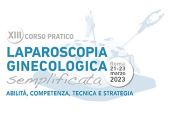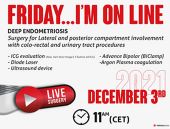The Disease

In 20%-25% of cases endometriosis is, however, asymptomatic and diagnosis mail as incidental finding during a surgery performed for other indications.
The stage of the disease not always correlates consistently with the frequency and severity of symptoms. Small lesions can produce significant pain, on the contrary extensive lesions may give minimal signs of their presence.
The pain usually begins before menstruation, it grows gradually with the beginning of the flow and tends to decrease with the unwinding of the same, but may also be chronic and debilitating; it may be associated with lower back pain and sciatica. Rarely it has crampy characteristics. About 20% of patients have varying degrees of pelvic pain which can appear at any time of the cycle. The nodular thickening of the utero-sacral ligaments and the interest, more or less widespread, pelvic peritoneum and the Douglas cable, determine a fixity of intrapelvici organs. The movements of the cervix during sexual activity in this case can cause intense pain (deep dyspareunia) to the point that it is impossible completeness of the relationship and still undermine its quality.
At the menstrual period other possible symptoms are dysuria and hematuria, pain may occur in the ureteral points for compressive phenomena and, if there are obstructive lesions, you can go as far as hydronephrosis. In case of intestinal localizations bleeding it is uncommon, because the lesion infiltrates the inside from the outside the intestinal wall and the mucosa is almost never affected, while frequent are the dysfunctional phenomena, such as diarrhea and constipation, occlusive and stenotic lesions. Defecation can be particularly painful (dischezia) at presence of endometrial lesions of the most caudal part of the rectum and rectovaginal septum. Beside the typical pain symptoms of endometriosis it should be considered another key aspect of this disease, which is the correlation with infertility.
The exact pathophysiological mechanism underlying this association is largely unknown, although several factors are probably involved. When it comes to more severe and extended form of the disease, the reason for infertility could be explained by the presence of adhesions involving tubal fimbriae, the Douglas cavity and ovaries, compromising the normal anatomical relationships, and although often patency tubal is preserved, have severely compromised the release phenomena, uptake and transport of the oocyte. Decreased fertility has been highlighted, however, even in cases of mild or moderate endometriosis. The causes lie in an altered secretion of prostaglandins, with an alteration of the peritoneal microenvironment such as altering the egg-sperm interaction, and in the endometrial receptivity abnormalities.









